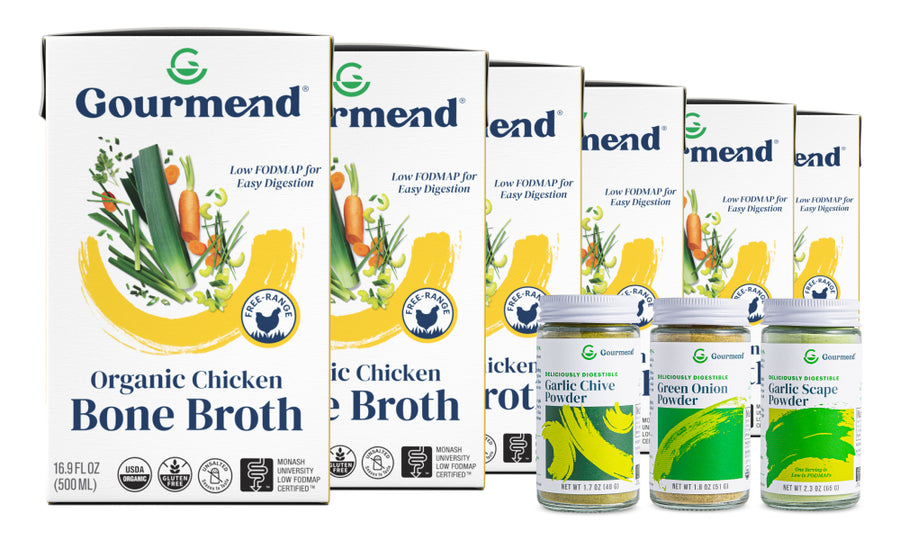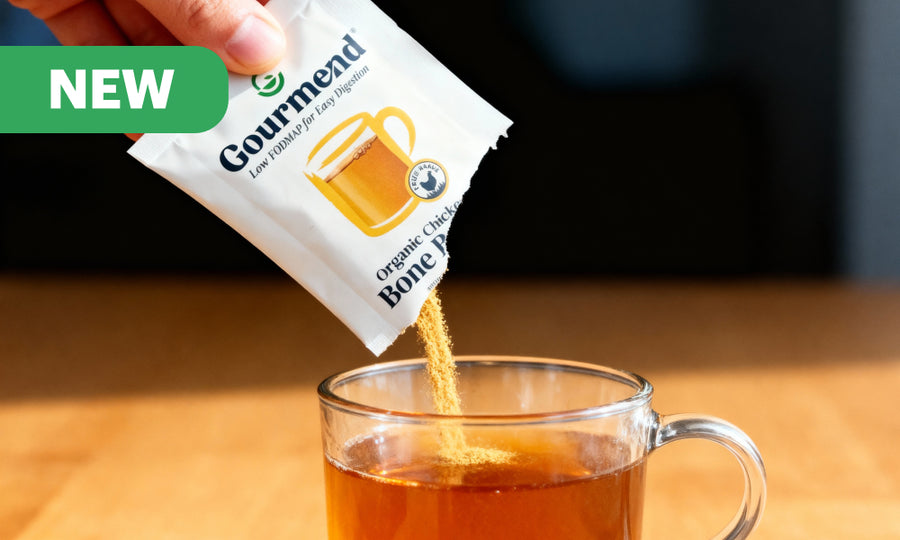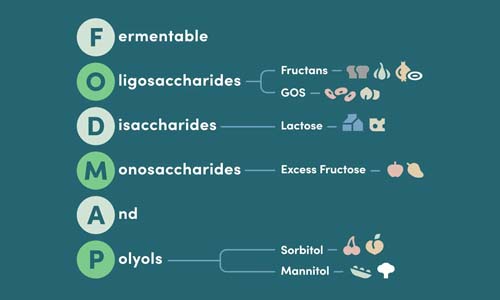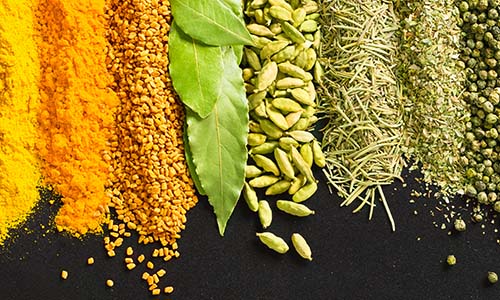Is Hummus Low FODMAP? The Complete 2025 Guide

Understanding Hummus and FODMAPs
If you're managing IBS or following a low FODMAP diet, you've probably wondered whether you can still enjoy that creamy, satisfying dip we all love. The answer isn't a simple yes or no – it depends on the ingredients and how you prepare it.
Key Takeaways
- Traditional hummus is high FODMAP because of chickpeas and garlic.
- Low FODMAP hummus can be made using canned chickpeas in 1/4 cup servings.
- Garlic-infused oil is a suitable low FODMAP alternative to fresh garlic in hummus.
- The FODMAP content of hummus depends on its ingredients and preparation methods.
- People managing IBS can still enjoy hummus by following proper low FODMAP guidelines.
Table of Contents
With nearly 1 billion people worldwide living with IBS and two-thirds of Americans experiencing digestive issues, understanding which foods support gut health has never been more important. Traditional hummus contains several ingredients that can trigger digestive discomfort, but with the right swaps and techniques, you can create a version that's gentle on your gut without sacrificing flavor. For more on the science behind FODMAPs, see this comprehensive guide to the FODMAP diet.
Key Fact: The main FODMAP culprits in traditional hummus are garlic (high in fructans) and chickpeas in large amounts (containing galacto-oligosaccharides). Smart ingredient swaps make all the difference.
What Makes Traditional Hummus High FODMAP?
Let's break down why your favorite store-bought or restaurant hummus might be causing digestive discomfort:
- Fresh Garlic
- Traditional recipes call for fresh garlic cloves, which are loaded with fructans – a type of FODMAP that can trigger bloating, gas, and stomach pain in sensitive individuals.
- Chickpea Quantity
- While chickpeas aren't extremely high in FODMAPs, they do contain galacto-oligosaccharides (GOS). The problem arises when we eat large portions – most restaurant servings far exceed the low FODMAP threshold.
- Hidden Ingredients
- Commercial hummus often contains onion powder, garlic powder, or other high FODMAP additives that aren't immediately obvious from a quick ingredient scan.
Here's what many people don't realize: the type of chickpeas you use matters significantly. Canned chickpeas that have been rinsed and drained contain fewer FODMAPs than dried chickpeas or fresh ones, making them your best choice for low FODMAP cooking. For more details, check out the Monash University low FODMAP hummus resource.
The Low FODMAP Hummus Solution
Creating gut-friendly hummus isn't about giving up flavor – it's about making smart swaps that actually enhance the taste while supporting easier digestion. Here's how we transform this beloved dip:
Garlic-Infused Oil Instead of Fresh Garlic
This is the game-changing swap that preserves that essential garlic flavor without the digestive downside. When you infuse oil with garlic and strain out the solids, you capture the aromatic compounds while leaving behind the problematic fructans. The result? Rich, garlicky flavor that's gentle on your gut.
The Canned Chickpea Advantage
Canned chickpeas are your secret weapon for low FODMAP cooking. The canning process and liquid help reduce FODMAP content, and when you rinse them thoroughly, you're removing even more of the compounds that can cause digestive distress. Stick to about 1/4 cup (40-42g) per serving, and you're in the clear.
Pro tip from our kitchen: We always give our canned chickpeas a thorough rinse in cold water until the water runs clear. This simple step removes excess sodium and further reduces FODMAPs, giving you a cleaner-tasting, gentler hummus base.
Smart Portion Control
The beauty of low FODMAP hummus lies in understanding that you don't need to eliminate foods entirely – you just need to respect your body's limits. A 1/4 cup serving gives you all the satisfaction of traditional hummus while staying within safe FODMAP thresholds. If you’re looking for more meal ideas that fit these guidelines, try our Low FODMAP Miso Salmon recipe.
FODMAP Threshold: Chickpeas remain low FODMAP when limited to 1/4 cup (42g) per serving. This portion provides about 6g of protein and 5g of fiber – substantial nutrition in a gut-friendly package.
Essential Ingredients for Perfect Low FODMAP Hummus

Creating restaurant-quality hummus at home requires understanding how each ingredient contributes to both flavor and digestive comfort. Here's your complete ingredient breakdown:
- Canned Chickpeas (Well-Rinsed)
- Your protein-packed foundation. The canning process reduces FODMAP content, and thorough rinsing removes excess sodium and oligosaccharides. Look for organic options without added preservatives for the cleanest flavor.
- Pure Tahini
- This sesame paste provides the signature creamy richness that makes hummus irresistible. Choose tahini with just one ingredient: sesame seeds. While it contains minimal FODMAPs, the 2-3 tablespoons used per batch stay well within safe limits.
- Garlic-Infused Olive Oil
- Your flavor secret weapon. This captures all the aromatic compounds that make garlic so appealing while leaving behind the fructans that cause digestive distress. You can make your own or purchase pre-made versions.
- Fresh Lemon Juice
- Brightens the entire dish and helps achieve that perfect creamy texture. The acidity balances the richness of tahini and adds a fresh, Mediterranean note that makes each bite more satisfying.
- Ground Cumin and Paprika
- These warming spices add depth and complexity. Cumin provides an earthy, slightly nutty flavor, while paprika contributes subtle sweetness and beautiful color. Both are naturally low FODMAP and gut-friendly.
Here's something most recipes won't tell you: the order in which you blend these ingredients matters significantly. Starting with tahini and lemon juice creates the smoothest, creamiest base – a technique we learned from Mediterranean cooks who've perfected this dish over generations.
Creating Your Own Garlic-Infused Oil
Making garlic-infused oil at home is simpler than you might think, and it ensures you're getting pure, clean flavor without any hidden additives:
- Gently heat 1/2 cup extra virgin olive oil with 3-4 crushed garlic cloves over low heat for 10-15 minutes
- Keep the temperature low – you want to infuse, not fry the garlic
- Let the oil cool completely, then strain out all garlic pieces
- Store in the refrigerator for up to one week
Storage Note: Homemade garlic-infused oil should be used within a week and kept refrigerated. For longer storage, consider purchasing commercially prepared versions that have been properly processed for shelf stability.
Step-by-Step Low FODMAP Hummus Recipe
This recipe yields approximately 8 servings of perfectly smooth, flavorful hummus that's gentle on sensitive digestive systems. Each serving contains just the right amount of chickpeas to stay within low FODMAP guidelines while delivering maximum satisfaction. For more inspiration, browse our Low FODMAP Recipes blog.
What You'll Need
- 1 can (15 oz) chickpeas, thoroughly rinsed and drained
- 3 tablespoons pure tahini
- 2 tablespoons garlic-infused olive oil
- 2-3 tablespoons fresh lemon juice
- 1/2 teaspoon ground cumin
- 1/2 teaspoon paprika (plus extra for garnish)
- 1/2 teaspoon salt (adjust to taste)
- 2-4 tablespoons cold water
- Extra virgin olive oil for drizzling
Preparation Method
- Create the creamy base: In your food processor, blend tahini and lemon juice for 60 seconds until whipped and creamy. This step is crucial for achieving that silky texture.
- Add the flavor foundation: Scrape down sides, then add garlic-infused oil, cumin, paprika, and salt. Process for another 30 seconds.
- Incorporate the chickpeas: Add half the chickpeas and process for 1 minute. Scrape down sides, add remaining chickpeas, and process until smooth.
- Achieve perfect consistency: With processor running, slowly add cold water, 1 tablespoon at a time, until you reach your desired creaminess.
- Final seasoning: Taste and adjust lemon juice, salt, or spices as needed. The flavor should be bright, garlicky, and well-balanced.
Professional tip: For ultra-smooth hummus, try peeling your chickpeas after rinsing. It takes a few extra minutes, but the result is restaurant-quality texture that's worth the effort. Simply rub the chickpeas gently with a clean kitchen towel – the skins will slip right off.
Serving & Storage: This recipe makes 8 servings of approximately 1/4 cup each. Store covered in the refrigerator for up to one week. The flavors actually improve after a day, making it perfect for meal prep. For a delicious side, try pairing with Low FODMAP Crisp Roasted Baby Potatoes.
Advanced Techniques for Perfect Low FODMAP Hummus
Once you've mastered the basic recipe, these professional techniques will elevate your hummus from good to extraordinary while maintaining its gut-friendly profile.
Achieving Restaurant-Quality Texture
The difference between homemade and professional hummus often comes down to texture. Here's how we achieve that signature silky smoothness:
Temperature matters more than most home cooks realize. Using ice-cold water during blending creates a lighter, fluffier texture, while room temperature ingredients blend more easily. We start with room temperature tahini and lemon juice, then finish with cold water for the perfect balance.
- Double-strain your chickpeas: After rinsing, let them drain in a fine-mesh strainer for 15 minutes to remove excess moisture
- Warm your tahini: If it's thick from refrigeration, let it come to room temperature or warm it slightly for easier blending
- Process in stages: Don't rush – proper hummus takes 3-4 minutes of total processing time
- Add liquid gradually: This prevents the mixture from becoming too thin too quickly
Boosting Flavor Without FODMAPs
Creating complex, satisfying flavors while avoiding high FODMAP ingredients requires strategic seasoning. These techniques add depth without digestive distress:
- Roasted Red Pepper Variation
- Add 1/4 cup roasted red peppers for sweetness and vibrant color. This adds vitamin C and antioxidants while keeping FODMAP levels low.
- Smoked Paprika Enhancement
- Replace regular paprika with smoked paprika for an earthy, complex flavor that mimics the depth usually provided by roasted garlic.
- Herb Oil Finish
- Drizzle with herb-infused olive oil made from basil, oregano, or thyme. These herbs are low FODMAP and add fresh, aromatic notes.
- Lemon Zest Addition
- A teaspoon of fresh lemon zest brightens the entire dish and adds aromatic oils that enhance the Mediterranean character.
Spice Timing: Add delicate spices like sumac or za'atar after processing to preserve their distinct flavors and prevent them from becoming muddy during blending.
Smart Serving and Storage Solutions
Low FODMAP hummus isn't just about the recipe – it's about how you incorporate it into your daily routine for maximum digestive comfort and culinary satisfaction.
Portion control becomes effortless when you pre-portion your hummus into 1/4 cup containers immediately after making it. This prevents accidentally exceeding FODMAP limits when you're hungry and not paying close attention to serving sizes.
Your Path to Digestive-Friendly Hummus Success
Creating perfect low FODMAP hummus represents more than just following a recipe – it's about reclaiming the joy of eating foods you love without the anxiety of digestive consequences. With the right ingredients, proper techniques, and mindful portioning, you can enjoy this Mediterranean staple as part of a gut-friendly lifestyle.
The key to successful low FODMAP hummus lies in three fundamentals: using well-rinsed canned chickpeas, replacing fresh garlic with garlic-infused oil, and respecting the 1/4 cup serving size limit. Master these basics, and you'll have a versatile, nutritious dip that supports both your taste buds and digestive comfort.
Remember that managing IBS and digestive sensitivities isn't about deprivation – it's about making informed choices that let you eat confidently. When you understand how ingredients affect your body and learn techniques like proper chickpea preparation and flavor enhancement through low FODMAP spices, you're not just making hummus. You're building a foundation for lifelong digestive wellness. For more tips and in-depth guides, visit our Learn blog.
Your Hummus Success Checklist:
- ✓ Use canned, well-rinsed chickpeas for lower FODMAP content
- ✓ Replace fresh garlic with garlic-infused olive oil
- ✓ Stick to 1/4 cup servings to stay within safe limits
- ✓ Process tahini and lemon juice first for optimal texture
- ✓ Store properly portioned for easy, worry-free snacking
As you experiment with different flavor variations and techniques, you'll discover that low FODMAP cooking isn't limiting – it's liberating. Each successful batch of hummus builds your confidence in the kitchen and proves that dietary restrictions don't mean sacrificing flavor or satisfaction. Whether you're serving it to family, bringing it to gatherings, or simply enjoying it as a nutritious snack, your homemade low FODMAP hummus represents a delicious victory in your journey toward better digestive health.
Check out our Low Fodmap Bundles
Frequently Asked Questions
Can I eat hummus on a low FODMAP diet?
Traditional hummus is made primarily from chickpeas, which are high in FODMAPs when eaten in typical serving sizes. However, small servings—about 1/4 cup or less—can be tolerated on a low FODMAP diet. Portion control is key because larger amounts can cause digestive discomfort for those with IBS.
Is shop bought hummus low fodmap?
Most store-bought hummus brands contain chickpeas in quantities that exceed low FODMAP serving sizes, plus added garlic or onion powders, which are common triggers. This makes many commercial hummus options unsuitable for a low FODMAP diet. Checking ingredient labels carefully is important, and opting for brands that use garlic-free recipes or making your own with low FODMAP ingredients is a safer choice.
Is hummus good for you if you have IBS?
Hummus can be nutritious, providing fiber and plant-based protein, but traditional recipes may trigger IBS symptoms due to high FODMAP content, mainly from chickpeas and garlic. If you enjoy hummus, choosing small portions and low FODMAP-friendly recipes helps you get the benefits without the digestive upset. Pairing it with gut-friendly foods and eating mindfully supports better tolerance.
Is sabra hummus low fodmap?
Sabra hummus typically contains chickpeas in amounts above low FODMAP serving sizes and often includes garlic or onion powders, making it generally unsuitable for a low FODMAP diet. People managing IBS symptoms should avoid large servings of Sabra or any hummus with added high FODMAP ingredients to prevent flare-ups.
Is 100% peanut butter low FODMAP?
Yes, 100% natural peanut butter without added high FODMAP ingredients like honey or high-fructose corn syrup is considered low FODMAP in moderate amounts, usually up to 2 tablespoons. It’s a gut-friendly, protein-rich option that can fit well into a low FODMAP diet when consumed mindfully.
Is hummus gut friendly?
Hummus can be gut friendly if made with low FODMAP ingredients and eaten in controlled portions, offering fiber and protein that support digestion. Using substitutes like canned chickpeas rinsed well and avoiding garlic or onion ingredients helps reduce digestive irritation. For those with IBS, homemade or carefully selected hummus can be part of a flavorful, gentle diet.





